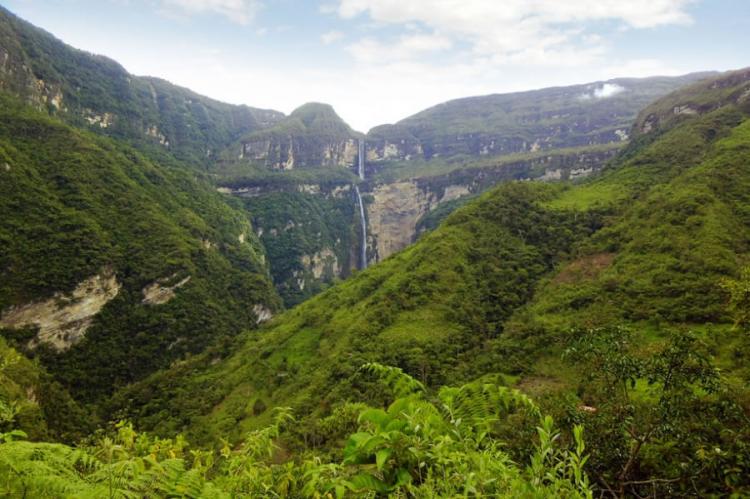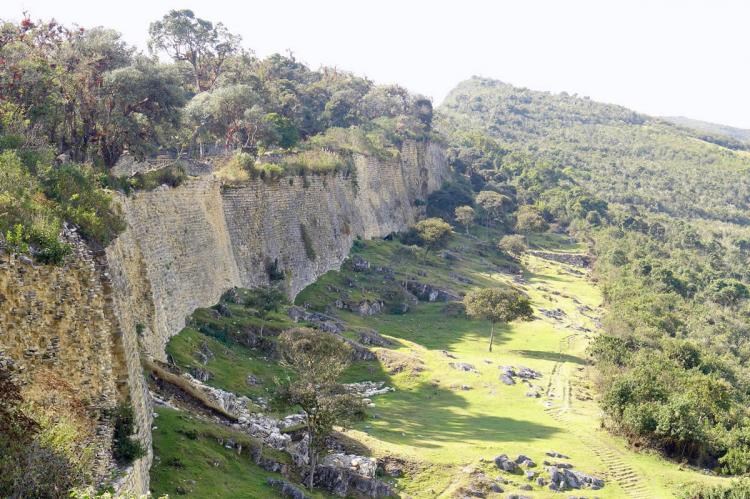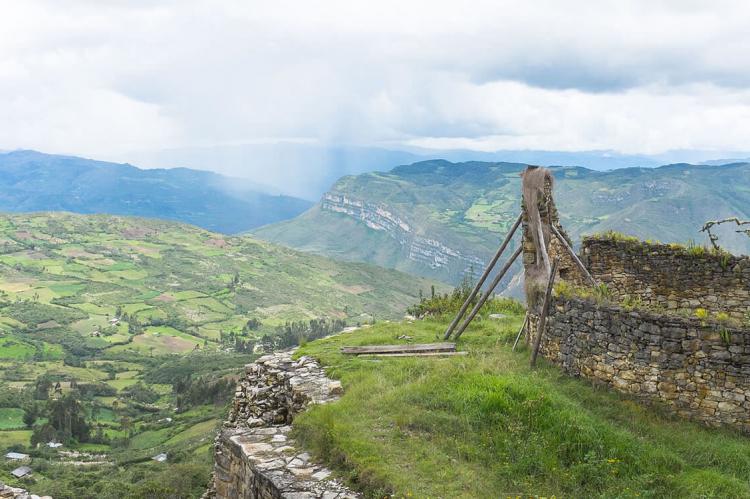Río Abiseo National Park: A Peruvian Wonder of Nature and Culture
Río Abiseo National Park, situated on the eastern slope of the tropical Peruvian Andes, is a unique protected area that not only harbors a rich tapestry of biodiversity but also serves as a testament to the ancient civilizations that once thrived within its boundaries.
Río Abiseo National Park: A Peruvian Wonder of Nature and Culture
Nestled in the San Martín department of Peru, on the eastern slope of the tropical Peruvian Andes, lies Río Abiseo National Park, a World Heritage Site that seamlessly blends natural and cultural wonders. This unique protected area not only harbors a rich tapestry of biodiversity but also serves as a testament to the ancient civilizations that once thrived within its boundaries.
Geographical Setting
Río Abiseo National Park is situated wholly within the Gran Pajatén Biosphere Reserve, spanning an impressive 274,520 hectares (67,756 acres). Its vast expanse encompasses several forest types, high Andean grasslands known as páramo, and extraordinary archaeological sites that span at least eight millennia of human history.
Ecological Diversity
The park protects three distinct ecoregions, each with its unique characteristics and biodiversity:
Ucayali Moist Forests
At lower elevations, the Ucayali moist forests provide a lush and verdant habitat for a multitude of species adapted to the tropical conditions.
Peruvian Yungas
The middle elevations are dominated by the Peruvian Yungas, a diverse ecosystem characterized by montane cloud forests. Short trees, moss, and lichen thrive in the constant high humidity.
Cordillera Central Páramo
At the highest elevations, the Cordillera Central páramo ecoregion unfolds, a harsh yet resilient landscape where grasses, cushion plants, and dwarf shrubs have adapted to the extreme conditions of the high Andes.
A Pleistocene Refuge
Scientists consider the forested regions of Río Abiseo National Park to be part of the Pleistocene refuge. In this sanctuary, flora and fauna are believed to have survived and evolved during periods of past glaciation. This theory provides a plausible explanation for the astonishing diversity of species and the high degree of endemism observed in the park's forests and grasslands.
Climate and Rainfall
The park boasts at least seven distinct climate zones, including montane forest, tropical alpine forest, montane rainforest, high Andean grasslands (puna), and dry forest. Rainfall patterns range from 500 mm to 2000 mm (20 to 80 inches) per annum, contributing to the rich diversity of habitats found within the park's boundaries.
Flora and Fauna
Biodiversity Hotspot
Río Abiseo National Park protects the headwaters of three major rivers of the Huallaga River system, a prominent Peruvian tributary to the Amazon River. Both the Andean grasslands and the lowland, montane, and cloud forests harbor impressive numbers of rare species, many of which are restricted to the property in their range.
Notable Species
Among the park's notable inhabitants is the critically endangered yellow-tailed woolly monkey, one of the largest monkey species in South America. This primate was long believed to be extinct before its scientific rediscovery within the boundaries of what is now the protected area.
Archaeological Treasures
A Harmonious Blend
The numerous archaeological sites within Río Abiseo National Park blend harmoniously with the forests, canyons, and highlands, creating a stunning backdrop of an unspoiled and remote part of the Andes.
Ancient Civilizations
The known ruins and other archaeological remains extend over 150,000 hectares (370,000 acres) in and around the property, indicating a significant level of human occupation dating back to the preceramic era around 6,000 B.C. and continuing steadily until before European colonization.
Archaeological Discoveries
Since 1985, 36 archaeological sites have been recorded, with 29 located in the high-elevation grasslands and seven within the continuous montane forests inside the park. These sites include rock shelters, roads, domestic and ceremonial structures, storage buildings, fences, platforms, agricultural terraces, and burial sites, revealing the existence of trade relationships with places as far away as the Pacific Coast and the Ecuadorian Andes.
Highlighted Sites
Among the archaeological sites, two stand out for their remarkable significance:
Los Pinchudos
Los Pinchudos is an elaborate Chachapoya tomb complex perched on a high rock cleft in one of Peru's northern Andean cloud forests. The clay and stone tombs of the complex feature wooden roofs and are painted in red, yellow, black, and white colors, adorned with anthropomorphic carvings featuring large phalluses, which give the site its name.
Gran Pajatén
Gran Pajatén sits on a hilltop above the Montecristo River valley and consists of a series of at least 26 circular stone structures atop numerous terraces and stairways. The ruins occupy an area of about 20,000 square meters (215,000 square feet), with the principal buildings decorated with slate mosaics displaying human, bird, and geometric motifs. Analysis of ceramic samples and radiocarbon dates indicate that the area was occupied as early as 200 BCE. However, the visible building ruins were constructed during Inca times and are attributed to the Chachapoyas culture based primarily on architectural evidence.
Conservation and Tourism
While Río Abiseo National Park has been closed to tourism since 1986 due to the fragile nature of its natural and archaeological environment, ongoing conservation efforts aim to strike a balance between preserving this remarkable heritage and providing controlled access for research and educational purposes.
Conclusion
Río Abiseo National Park stands as a testament to the intricate interplay between nature and human civilization. It is a place where biodiversity and cultural heritage coexist in delicate harmony. As efforts continue to protect and understand this unique World Heritage Site, its significance as a global treasure only grows. It serves as a reminder of the rich tapestry of life that has flourished in the Peruvian Andes for millennia.


